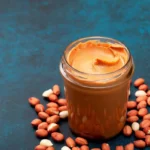
Welcome to our delicious exploration of one of the most comforting desserts in culinary history: bread pudding! Whether you’re a long-time fan or new to this delightful dish, there’s so much more to bread pudding than meets the eye. From its rich historical roots to the diverse regional variations that make it unique, this beloved treat has captured hearts and taste buds around the world. In this blog, we’ll dive into 25 fascinating facts that highlight the versatility, creativity, and cultural significance of bread pudding. Get ready to discover everything from its humble beginnings to gourmet interpretations that grace the menus of high-end restaurants. So, grab a spoon and join us on this sweet journey through the world of bread pudding!
Origin: Bread pudding has its roots in Europe, dating back to the 13th century. It emerged as a practical solution to the problem of food waste at a time when bread was a staple food. The concept was simple: stale bread, which was often hard and unpalatable, could be soaked in a mixture of milk and eggs, along with sugar and spices, to create a delicious dish. This not only helped to reduce waste but also provided a filling and nutritious meal. As the dish spread across Europe, various cultures began to adapt it, leading to the many regional variations we see today.
First Recipe: The earliest known recipe for bread pudding appears in “The Forme of Cury,” a cookbook compiled in the 14th century by the chefs of King Richard II of England. This historical document reflects the culinary practices of medieval England and includes a variety of recipes, including one for a bread pudding-like dish. These early recipes often included ingredients such as dried fruits and spices, which were prized at the time. The preservation of this recipe provides insight into the eating habits and resourcefulness of people in medieval society.
Popular Variants: In the United States, bread pudding has evolved into several popular variants, with New Orleans-style bread pudding being one of the most famous. This version typically incorporates French bread, known for its density and ability to absorb custard without falling apart. New Orleans-style bread pudding is often enriched with ingredients like bourbon or rum sauce, and it may include raisins or other fruits. This regional variation reflects the rich culinary heritage of New Orleans, influenced by Creole and Cajun traditions, making it a beloved dessert in Southern cuisine.
Main Ingredients: The fundamental ingredients of traditional bread pudding include bread, milk, eggs, sugar, and spices. The type of bread used can vary widely, from white bread to brioche or even croissants, each contributing a unique texture and flavor. Milk acts as a soaking agent, while eggs provide structure and richness to the custard. Sugar adds sweetness, and spices like cinnamon and nutmeg enhance the overall flavor profile. The versatility of these ingredients allows for countless variations, as cooks can customize their bread pudding with additional components such as fruits, nuts, or chocolate.
World Record: The current Guinness World Record for the largest bread pudding is a remarkable achievement that highlights both culinary creativity and community effort. This record is held by a team in India, specifically by Joseph Dias and the Trinity Group, who collaborated with a group of volunteers in Panaji, Goa. Achieved on August 2, 2019, this monumental dessert weighed an astounding 1,424 kg (3,139 lb 6.1 oz). The event not only showcased the scale of the bread pudding but also served as a celebration of local culture and cuisine, bringing together people from various backgrounds to partake in the creation of this massive dish. The preparation involved a significant amount of ingredients and coordination, demonstrating the dedication and teamwork required to pull off such a feat.
Culinary Uses: While bread pudding is primarily known as a dessert, it can also be made savory, allowing for a variety of culinary applications. Savory bread puddings may include cheese, vegetables, and even meats, making them suitable for brunch or as a side dish. This versatility highlights bread pudding’s adaptability, as it can be tailored to suit different tastes and occasions. Chefs often experiment with flavors and ingredients, creating unique dishes that can appeal to both sweet and savory palates.
Baker’s Dozen: A typical recipe for bread pudding calls for about 12 slices of bread, which is often referred to as a “baker’s dozen.” This amount is generally sufficient to yield a hearty serving for several people, making bread pudding an excellent choice for gatherings and family meals. The actual number of slices may vary depending on the thickness of the bread and the desired portion size, but using around 12 slices provides a good balance of bread to custard, ensuring a moist and flavorful dish.
Baking Time: Bread pudding is usually baked for 45 minutes to 1 hour at around 350°F (175°C). This baking time allows the custard to set properly while the bread absorbs the flavors and moisture. The exact baking duration may vary based on factors such as the size of the baking dish and the specific recipe used. To check for doneness, cooks often look for a golden-brown top and a firm, custardy texture in the center. Proper baking ensures that the bread pudding is both delicious and safe to eat.
Serving Temperature: Bread pudding can be served warm, at room temperature, or chilled, depending on personal preference and the specific recipe. Many people enjoy it warm, especially when served with a drizzle of sauce or a scoop of ice cream. However, some variations, particularly those made with rich custards, can be just as delightful when allowed to cool. The flexibility in serving temperature makes bread pudding an appealing dessert for various occasions, as it can be prepared in advance and served at the desired temperature. Additionally, serving it warm allows the flavors to shine through, while chilled versions may offer a refreshing contrast, especially during warmer months.
Cultural Significance: Bread pudding holds cultural significance in many communities, often regarded as a comfort food that evokes nostalgia and family traditions. In various cultures, it is served during holidays and special occasions, symbolizing togetherness and sharing. For instance, in the Southern United States, bread pudding is a staple dessert at holiday gatherings, reflecting the region’s culinary heritage. Its ability to bring people together over a delicious and hearty dish underscores its importance in cultural celebrations and family meals, making it a cherished recipe passed down through generations.
Historical Use: Historically, bread pudding was created as a frugal dish aimed at minimizing food waste. In times when resources were scarce, using stale bread to create a new meal was practical and economical. This dish allowed households to stretch their ingredients and make the most out of what they had on hand. By soaking leftover bread in a mixture of milk, eggs, and sugar, families could transform what would otherwise be discarded into a delicious and filling dessert, reflecting the resourcefulness of past generations.
Sugar Content: A typical serving of bread pudding can contain between 15 to 30 grams of sugar, depending on the recipe and additional ingredients used. This sugar content primarily comes from the added sugar in the custard and any sweet toppings or sauces, such as caramel or vanilla sauce. The sweetness can be adjusted based on personal preference, making bread pudding a versatile dessert that can cater to different tastes. For those looking to reduce sugar, alternative sweeteners can also be used in the recipe.
Common Spices: Cinnamon and nutmeg are the most commonly used spices in bread pudding recipes, contributing warmth and depth of flavor to the dish. Cinnamon, with its sweet and aromatic profile, pairs well with the rich custard, while nutmeg adds a subtle earthiness. These spices not only enhance the taste but also evoke a sense of comfort and nostalgia, making bread pudding a favorite in many households. Other spices, such as vanilla or allspice, may also be used to create unique flavor combinations.
Variations Worldwide: In France, a similar dish called “pain perdu,” meaning “lost bread,” is made with stale bread soaked in a mixture of milk and eggs. This dish has a slightly different preparation method and often emphasizes the simplicity of the ingredients. Pain perdu is typically cooked on a stovetop, resulting in a crispy exterior and a soft interior. This French version reflects the cultural significance of using leftover bread creatively, similar to bread pudding in other regions, showcasing the universal appeal of this concept.
Nutritional Value: A serving of traditional bread pudding can provide around 300-400 calories, depending on the ingredients used and portion size. The caloric content is influenced by factors such as the type of bread, the amount of sugar, and any added ingredients like chocolate or fruits. While it can be a rich dessert, bread pudding also offers nutrients from the eggs and milk, providing protein and calcium. As with many desserts, moderation is key, and it can be enjoyed as part of a balanced diet.
Alcoholic Additions: Many recipes for bread pudding include alcohol, with rum and bourbon being popular choices for flavor enhancement. The addition of alcohol not only contributes a unique depth of flavor but also helps to tenderize the bread, creating a moist and rich texture. The alcohol typically cooks off during baking, leaving behind the essence of the spirit. This practice is especially common in regional variations, such as New Orleans-style bread pudding, where the incorporation of alcohol reflects the local culinary traditions.
Serving Size: A standard serving of bread pudding is typically around 1 cup (about 240 ml), which provides a satisfying portion without being overly indulgent. This serving size allows for a balance between enjoying the dessert and maintaining portion control. Depending on the occasion, servings can be adjusted, and smaller portions can be served alongside other desserts or as part of a buffet. The flexibility in serving size makes bread pudding suitable for both casual family meals and formal gatherings.
Fruit Additions: Common fruits added to bread pudding include raisins, apples, and bananas, which enhance the flavor and texture of the dish. Raisins are often used for their sweetness and chewy texture, while apples can add a fresh, tart contrast. Bananas contribute moisture and a natural sweetness, making them a popular choice in many recipes. These additions not only elevate the taste but also provide additional nutrients, making bread pudding a more wholesome dessert option.
Custard Base: The custard base made from eggs and milk is what gives bread pudding its rich and creamy texture. The eggs act as a binding agent, helping to hold the bread together, while the milk adds moisture and creaminess. This custard is typically seasoned with sugar and spices, creating a flavorful mixture that soaks into the bread. The balance of eggs to milk is crucial, as it determines the overall consistency and richness of the final dish, allowing for variations in texture based on personal preference.
Regional Differences: Bread pudding varies significantly between regions, particularly between the UK and the US. In the UK, bread pudding is traditionally made using stale bread that is cut into breadcrumbs, resulting in a denser texture compared to its American counterpart. The British version often incorporates ingredients such as dried fruits like currants or raisins and is flavored with spices like nutmeg or cinnamon. In contrast, American bread pudding tends to be softer and more custard-like, frequently using larger chunks of bread, including brioche or challah, and is often served with sauces like bourbon or vanilla cream. These regional variations reflect local tastes and available ingredients, making bread pudding a versatile dish that adapts to cultural preferences.
Baking Dish: The baking dish used for bread pudding plays a crucial role in its final texture and presentation. Typically, bread pudding is baked in a square or rectangular dish, often measuring around 9×13 inches, which allows for even cooking and easy serving. This size is ideal for creating a dish that is thick enough to hold its shape yet allows the custard mixture to permeate throughout the bread. The choice of dish material, such as glass or ceramic, can also affect the cooking time and browning of the top, with darker pans often resulting in a more caramelized crust. Properly greasing the dish before adding the pudding mixture is essential to prevent sticking and ensure a clean release when serving.
Historical Recipe: Bread pudding has a rich history, with one of the oldest known recipes dating back to the 18th century. This early recipe highlights the dish’s origins as a way to use up stale bread, a common practice in times when food scarcity was a concern. The historical version often included ingredients like currants, which were a popular dried fruit at the time, along with spices such as nutmeg and cinnamon, which added warmth and depth to the flavor. These ingredients not only enhanced the taste but also reflected the culinary practices of the era, where spices were valuable commodities. Over the centuries, bread pudding has evolved, yet it remains a testament to resourcefulness in cooking and the ability to transform simple ingredients into a comforting dessert.
Popularity in Restaurants: Bread pudding has found a beloved place on dessert menus, particularly in Southern cuisine, where it is often served as a comforting end to a hearty meal. Many restaurants feature this dish due to its versatility and the nostalgia it evokes for home-cooked meals. Chefs often put their spin on traditional recipes, incorporating local ingredients or unique flavor profiles to create signature versions that stand out. The warm, custardy texture and the ability to pair well with sauces like caramel or vanilla custard make it a favorite among diners. Its popularity has led to a resurgence in artisanal and gourmet takes on bread pudding, further solidifying its status as a classic dessert.
Cooking Methods: Bread pudding can be prepared using various cooking methods, with the two most common being oven baking and slow cooking. Baking in an oven typically yields a slightly firmer texture with a beautifully browned top, while slow cooking often results in a more moist and creamy consistency. When using a slow cooker, the bread pudding is allowed to gently steam, which can enhance the flavors and create a rich, custardy interior. This method is particularly appealing for those who prefer a hands-off approach to cooking, as it requires minimal supervision and can be left to cook for several hours. Regardless of the method, the key is to ensure the bread is adequately soaked in the custard mixture, allowing for a harmonious blend of flavors.
Gourmet Variations: In high-end restaurants, bread pudding has been elevated to gourmet status, featuring unique and luxurious ingredients that transform this humble dessert into a culinary experience. Gourmet versions may include artisan breads, such as sourdough or brioche, which contribute distinct flavors and textures. Chefs often experiment with premium ingredients like gourmet chocolates, exotic spices, or seasonal fruits, creating innovative flavor combinations that surprise and delight diners. These upscale renditions can be priced over $10 per serving, reflecting the quality of ingredients and the creativity involved in their preparation. By presenting bread pudding in elegant ways, such as individual servings or accompanied by sophisticated sauces, restaurants showcase the dish’s versatility and potential for refinement.
Frequently Asked Questions about Bread Pudding:
1. What is bread pudding?
Bread pudding is a dessert made from stale or leftover bread that is soaked in a mixture of milk or cream, eggs, sugar, and flavorings such as vanilla or spices. The soaked bread is then baked until it forms a custard-like consistency. It can be enhanced with various ingredients, including dried fruits, nuts, chocolate, or sauces, making it a versatile and comforting dish.
2. How do you make bread pudding?
To make bread pudding, start by cutting stale bread into cubes. In a mixing bowl, combine eggs, milk or cream, sugar, and any desired flavorings. Whisk until well combined. Add the bread cubes to the mixture, ensuring they are fully soaked. Let it sit for a while to absorb the liquid. Pour the mixture into a greased baking dish and bake in a preheated oven at 350°F (175°C) for about 30-45 minutes, or until the top is golden brown and the custard is set. Serve warm, often with a sauce or whipped cream.
3. Can you use any type of bread for bread pudding?
Yes, you can use various types of bread for bread pudding. Common choices include white bread, brioche, challah, or even croissants. Stale bread works best, as it absorbs the custard mixture without becoming mushy. However, fresh bread can also be used; just let it dry out a bit before using it in the recipe.
4. What are some popular variations of bread pudding?
Bread pudding comes in many variations, depending on regional influences and personal preferences. Some popular types include:
- Chocolate Bread Pudding: Incorporates chocolate or cocoa powder for a rich dessert.
- Cinnamon Raisin Bread Pudding: Uses cinnamon raisin bread for added flavor and sweetness.
- Savory Bread Pudding: Made with cheese, herbs, and vegetables for a non-sweet version, often served as a side dish.
- Bread Pudding with Bourbon Sauce: A Southern favorite that features a bourbon-infused sauce drizzled over the top.
5. How long does bread pudding last?
When stored properly, bread pudding can last for about 3-4 days in the refrigerator. To store, cover it tightly with plastic wrap or transfer it to an airtight container. If you want to keep it longer, bread pudding can also be frozen for up to 2-3 months. To reheat, thaw in the refrigerator overnight and warm in the oven or microwave until heated through.
6. Can you make bread pudding ahead of time?
Yes, bread pudding can be made ahead of time. You can prepare it the day before and refrigerate it before baking. When you’re ready to serve, simply bake it according to the recipe instructions. Alternatively, you can bake it, let it cool, and then store it in the refrigerator. Reheating it before serving will ensure it’s warm and delicious.
7. Is bread pudding gluten-free?
Traditional bread pudding is not gluten-free, as it is made with bread containing gluten. However, you can make gluten-free bread pudding by using gluten-free bread alternatives. Ensure that all other ingredients, such as milk and flavorings, are also gluten-free to accommodate dietary restrictions.
8. What sauces pair well with bread pudding?
Bread pudding is often served with various sauces to enhance its flavor. Popular options include:
- Vanilla Sauce: A classic pairing that adds sweetness and richness.
- Caramel Sauce: Drizzled over the top for a decadent touch.
- Bourbon Sauce: A Southern favorite that adds depth and warmth.
- Chocolate Sauce: Perfect for chocolate bread pudding or for those with a sweet tooth.
9. Can you use fresh bread for bread pudding?
While stale bread is preferred for its ability to absorb the custard mixture without becoming overly soggy, you can use fresh bread. If using fresh bread, consider toasting it lightly or letting it sit out for a few hours to dry out slightly before using it in the recipe.
10. What is the difference between bread pudding and other similar desserts, like French toast casserole?
Bread pudding and French toast casserole share similarities, but there are key differences. Bread pudding is typically denser and has a custard-like texture, while French toast casserole often has a lighter, more cake-like consistency. Additionally, French toast casserole is usually made with slices of bread layered in a dish, while bread pudding involves cubed bread soaked in a custard mixture. Both are delicious, but their textures and preparation methods set them apart.









